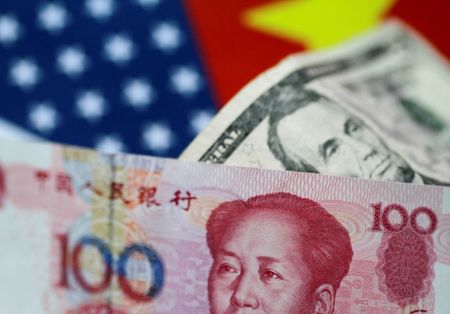
By Ambar Warrick
Investing.com– Most Asian currencies moved little on Friday as caution kicked in ahead of U.S. payrolls data that is likely to affect monetary policy, although dovish signals from the Federal Reserve pushed the dollar to a three-month low.
Regional currencies were also set for strong gains this week as the Federal Reserve flagged smaller interest rate hikes in the coming months- a scenario that is positive for risk-driven assets.
The Japanese yen rose 0.1%, and was the best performing Asian currency this week, up nearly 3% at a three-and-a-half-month high of 135.19 as it recovered further from a 30-year low.
The Chinese yuan fell 0.2%, although speculation that China will relax its strict anti-COVID policies saw the currency set for a 1.7% gain this week.
Growing public discontent with the country’s anti-COVID restrictions sparked a wave of unprecedented protests in the country this week, which also saw the government loosen some quarantine and movement measures in two major cities.
Weak PMI data, which highlighted even more pressure on the Chinese economy in recent months, also drummed up hopes that the government will be forced into relaxing its COVID policies. But Beijing has given no official word on such a move.
Broader Asian currencies were muted on Friday. The South Korean won rose 0.4% and was set to add 2.6% this week, while the Taiwan dollar headed for a weekly gain of 1.3%.
The dollar index and dollar index futures both moved little on Friday, but were set to lose 1.1% this week, their second straight week of losses.
Focus is now on U.S. nonfarm payrolls data due later in the day, which is expected to show that the country’s jobs market cooled slightly in November. The Fed has also targeted some cooling in the labor market as part of its measures against inflation this year.
But Powell warned that U.S. interest rates could peak at higher-than-expected levels, especially if inflation remains stubbornly high in the country.
PCE inflation data, which is the Fed’s preferred gauge of price pressures, was steady at an annualized rate of 6% in October, data showed on Thursday, remaining well above the Fed’s 2% target.
In Southeast Asia, the Thai baht was the best performer this week with a 2.6% gain following an interest rate hike and more hawkish signals from the country’s central bank.
The Indonesian rupiah jumped 0.8% and was the best performer on Friday after strong inflation readings for November suggested that the central bank will keep raising interest rates.
